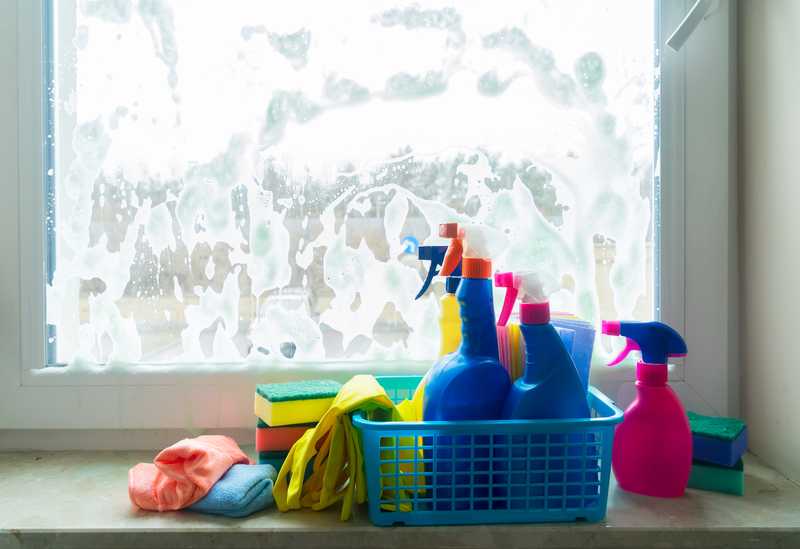Care and Maintenance
Proper care for your Anlin windows and doors will allow you to enjoy the beauty and energy efficiency of your products for years to come, even in the challenging North Texas weather.
Caring for Your Windows and Doors
With the right maintenance, your Anlin windows and doors will retain their beauty and energy efficiency for many years, even in the challenging North Texas climate. Our Care & Maintenance section offers valuable tips on maintaining your windows and doors, along with recommended cleaning products.

Table of Contents
Recommended Cleaners
| Item | Cleaning Solutions |
|---|---|
| Bubble Gum | Fantastik, Murphy Oil Soap, Windex, Solution of vinegar (30%) and water (70%) |
| Crayon | Lestoil |
| DAP (Oil-based caulk) | Fantastik |
| Lithium Grease | Fantastik, Lestoil, Murphy Oil Soap, Windex, Mr. Clean, Magic Eraser |
| Mold & Mildew | Fantastik, Windex, Solution of vinegar (30%) and water (70%) |
| Pencil | Soft Scrub |
| Rust | Fantastik, Murphy Oil Soap, Windex |
NEVER use any of the following products on any part of your window or patio door (they may damage the glass surface or insulating seal): Petroleum-based cleaners (i.e. lacquer thinner, acetone and other solvents), caustic chemicals, razor blades, putty knifes, abrasive pads or high-pressure water hoses. These items may cause permanent damage.
Lubricating For Easy Operation
Periodically lubricate all sliding window and door tracks and rollers. We recommend that you lubricate the hardware components once a year. In areas with high salt air, at least twice a year is recommended. Lubricant should be 100% Silicone and can be found at most major hardware stores.
How to Clean the Glass
To clean your window frame, mix mild dish soap with water and use a non-abrasive sponge. Squeeze out or allow excess liquid to drain from the sponge before using it to wash the frame. Afterward, use a damp towel to thoroughly rinse the frame, ensuring all soap residue is removed. Finish by drying the frame with a microfiber towel. Avoid using harsh or abrasive cleaners, as they can cause irreversible damage to your windows or doors.
How to Clean the Frame
To clean your window frame, mix mild dish soap with water and use a non-abrasive sponge. Squeeze out or allow excess liquid to drain from the sponge before using it to wash the frame. Afterward, use a damp towel to thoroughly rinse the frame, ensuring all soap residue is removed. Finish by drying the frame with a microfiber towel. Avoid using harsh or abrasive cleaners, as they can cause irreversible damage to your windows or doors.
How to Clean the Screen
To clean the screen, first, remove it from the window frame. Using both hands, grasp the screen's pull rail (or pull tabs) and gently pull towards the center of the window, then push the screen outward.
Place the screen on a clean, flat surface. Dip a soft brush into a bucket filled with a mixture of mild dish soap and water. Gently scrub both sides of the screen with the soapy solution.
Rinse the screen with a hose using a light mist setting on the spray nozzle. Wipe the screen dry with a microfiber towel.
When reinserting the screen into the frame, ensure the springs are placed back into the screen channel. Pull the screen towards the center, then secure it by pulling it back into position.
How to Adjust the Patio Door Rollers
If your sliding patio door is difficult to open or close, the rollers might need adjustment.
Start by opening the door slightly and inspecting the gap between the door and the frame.
The roller adjustment screws are located at both ends of the bottom of the door. Use a Phillips head screwdriver to adjust the screws. Avoid using a screw gun, and be careful not to strip the screws. Turn the adjustment screw clockwise to raise the door, or counterclockwise to lower it. Keep adjusting until the gap between the door and the frame is consistent from top to bottom. Adjust the other roller screw as needed.
How to Adjust the Patio Door Screen Rollers
If your screen door is hard to open or close, the rollers may need to be adjusted.
Slightly open the screen door and examine the gap between the door and the frame.
The roller adjustment screws are located at the top and bottom ends of the screen door. Use a Phillips head screwdriver to adjust the screws. Avoid using a screw gun, and be cautious not to strip the screws. Turn the adjustment screw clockwise to raise the screen door or counterclockwise to lower it. Continue adjusting until the gap between the screen door and the frame is even. Adjust the other roller screw as necessary. Check if the door slides smoothly and repeat the steps if further adjustments are needed.
Understanding and Cleaning Weep Holes
Windows and patio doors are designed with weep holes at the exterior bottom of the frames to help protect your home by allowing water to drain outside while preventing airflow.
Periodic inspections and cleaning are essential for the drainage system to function properly. Use a damp towel to wipe away dirt and debris from the sill and track areas. Ensure that the weep holes are free of dirt, sand, stucco, or debris. A small soft brush can be used to clear the openings if necessary.
How to Reduce Interior Window Condensation
Condensation on the inside of windows is a result of excess humidity inside your home, not a problem caused by the windows themselves. Everyday activities such as cooking, showering, washing dishes, and doing laundry add moisture to the air. When warm, moist air comes into contact with a colder window surface, condensation occurs. This indicates excess moisture in your home, and it’s important to reduce humidity levels.
If this issue is new and wasn’t present with your old windows, it may be due to the tighter seals and better insulation of modern windows compared to older, draftier windows.
To reduce humidity and interior window condensation, consider the following:
- Ensure all external ventilation systems are working properly.
- Open windows and doors when practical to allow moisture to escape.
- Use ceiling fans to promote air circulation, and keep fireplace dampers open to provide a path for moisture to exit.
- Run kitchen and bathroom exhaust fans during and after use.
- Consider using dehumidifiers in homes with high humidity levels.
Understanding Exterior Window Condensation
Exterior condensation occurs when moisture forms on the outside surface of the glass, often after cool nights following warm days.
This type of condensation is common on energy-efficient windows and patio doors, and is a sign that they are performing as expected. The insulation prevents the interior warmth from reaching the exterior glass, causing the outer surface to cool below the dew point, which results in condensation. This process is similar to dew forming on a car windshield or grass after a cool night. While it may be unsightly, exterior condensation will disappear once the day warms up.
Get Your FREE in Home Consultation and Estimate Now!
Schedule your no-obligation visit with one of our expert design consultants today!


